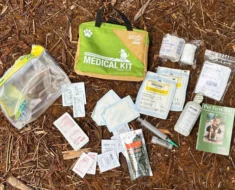Are you wondering how to feed your puppy the right way as they grow? Setting a feeding schedule that matches your puppy’s age is key to their health and happiness.
But it can feel confusing to know when and how often to feed them. Don’t worry—you’re about to discover simple, easy-to-follow feeding timetables designed just for your puppy’s stage of life. By the end of this article, you’ll have a clear plan to keep your furry friend well-nourished and thriving every day.
Let’s get started!

Credit: www.pumpkin.care
Puppy Feeding Basics
Puppies need different nutrition as they grow.Young puppies require food rich in protein and fat for energy and growth. Older puppies need balanced meals with vitamins and minerals to support development.
Choose food made for puppies, not adults. Puppy food has extra nutrients for their needs. Dry kibble or wet food both work well. Pick high-quality brands with natural ingredients.
Portion sizes depend on the puppy’s age and weight. Small puppies eat less but more often. Larger puppies need bigger meals but fewer times a day. Follow package guidelines and watch your puppy’s weight.
Newborn To 8 Weeks
Newborn puppiesneed to eat every 2-3 hours for proper growth. Feeding should happen around the clock, day and night. Use mother’s milkif possible. If not, select a high-quality puppy milk formulamade for puppies.
Feed with a bottle or syringecarefully to avoid choking. Keep food warm, about body temperature. Watch the puppy’s weight and healthto adjust feeding amounts.
| Age | Feeding Frequency | Type of Food |
|---|---|---|
| 0-2 weeks | Every 2 hours | Mother’s milk or formula |
| 3-4 weeks | Every 3-4 hours | Milk or start soft weaning |
| 5-8 weeks | 4 times a day | Softened puppy food + milk |
Start weaningslowly at about 3-4 weeks. Mix puppy food with water or formula to make it soft. Offer small amounts to encourage eating. By 8 weeks, puppies should eat mostly solid food.
8 To 12 Weeks
Puppies aged 8 to 12 weeksstart to eat solid food. Their diet changes from milk to soft, wet puppy food. Offer small meals 4 times a dayto help their tiny stomachs. Each meal should be easy to chew and nutritious.
Sample feeding times are: 7 AM, 12 PM, 5 PM, and 9 PM. Keep fresh water available at all times. Watch your puppy’s eating habits closely.
| Time | Meal |
|---|---|
| 7 AM | Soft puppy food (wet or soaked kibble) |
| 12 PM | Soft puppy food |
| 5 PM | Soft puppy food |
| 9 PM | Soft puppy food |
Monitor growthby checking weight weekly. Healthy puppies gain weight steadily. If eating less or losing weight, talk to a vet. Growth and energy levels show if the feeding schedule works well.

Credit: www.pumpkin.care
3 To 6 Months
Between 3 to 6 months, puppies need fewer meals but larger portions. Most puppies eat 3 meals dailyduring this time. This helps their digestion and growth. Gradually, reduce from 4 meals to 3 meals to match their age.
| Time | Meal | Portion |
|---|---|---|
| 7:00 AM | Breakfast | 1/3 of daily food |
| 12:00 PM | Lunch | 1/3 of daily food |
| 5:00 PM | Dinner | 1/3 of daily food |
Common feeding issues include refusing foodor overeating. Keep meal times consistent to help. Avoid giving too many treats. If the puppy refuses food, wait 15 minutes and try again. For overeating, measure portions carefully. Always provide fresh water.
6 To 12 Months
Between 6 and 12 months, a puppy’s meals need careful adjustment. Their growth slows, so meal portionsshould be slightly smaller than before. Feed your puppy 2 to 3 times a dayto keep energy steady. Treats can be added but keep them small and healthy. Avoid giving too many treats to prevent weight gain.
| Time | Meal | Portion Size |
|---|---|---|
| 7:00 AM | Breakfast | 1/3 of daily food |
| 12:00 PM | Lunch | 1/3 of daily food |
| 6:00 PM | Dinner | 1/3 of daily food |
Supplements like fish oil can help coat and joint health. Always check with a vet before starting new supplements. Treats are good for training but use sparingly. Keep treats less than 10% of total daily calories.
Tips For Successful Feeding
Keeping a consistent feeding routinehelps puppies feel safe and comfortable. Feed your puppy at the same times every day. This builds a strong habit and prevents hunger surprises.
Watch for hunger cueslike sniffing, whining, or licking lips. These signs mean your puppy is ready to eat. Respond quickly but avoid feeding too often.
Avoid overfeedingby measuring food portions carefully. Too much food can cause health problems like weight gain or upset stomach. Use a measuring cup to give the right amount.
When To Consult A Veterinarian
Signs of feeding problemsinclude vomiting, diarrhea, or refusal to eat. Puppies that seem weak or lose weight need attention. Sudden changes in appetite or stool can signal health issues. Check for unusual drooling or choking.
Health checkshelp find the cause of feeding issues. A vet can suggest tests or treatments. Diet adjustments may be needed based on age, breed, or health. Some puppies require special food for allergies or digestive problems.
| Symptom | Possible Cause | Action |
|---|---|---|
| Vomiting | Overeating, infection, or food allergy | Contact vet, monitor feeding amounts |
| Diarrhea | Diet change, parasites, or illness | See vet, keep puppy hydrated |
| Refusal to eat | Stress, pain, or illness | Vet checkup, adjust feeding times |

Credit: www.pumpkin.care
Frequently Asked Questions
How Often Should I Feed My Puppy Daily?
Puppies need frequent meals daily to support growth. Typically, feed newborns 4-6 times, 8-12 weeks old 3-4 times, and older puppies twice daily. Adjust based on age and breed size for optimal health and energy.
What Is The Best Puppy Feeding Schedule By Age?
Newborn puppies eat every 2-3 hours. At 8 weeks, feed 3-4 times daily. By 6 months, reduce to twice a day. This gradual change supports digestion and helps establish healthy eating habits.
Can I Use Sample Timetables For My Puppy’s Feeding?
Yes, sample timetables provide a practical feeding guide. They help create consistency and ensure your puppy eats at proper intervals. Adjust the timetable to fit your puppy’s breed, size, and activity level for best results.
When Should I Transition Puppy To Adult Feeding Schedule?
Transition usually starts around 6 months old, depending on breed. Slowly replace puppy food with adult food over 7-10 days. This helps avoid digestive upset and supports your dog’s changing nutritional needs.
Conclusion
Setting a puppy feeding schedule helps your puppy grow healthy and strong. Feeding by age meets their changing needs. Use sample timetables to plan meals easily. Keep feeding times consistent every day. Watch your puppy’s appetite and energy levels closely.
Adjust portions as they grow bigger. A good schedule builds trust and routine. Healthy habits start early and last long. Caring for your puppy’s diet shows love and responsibility. Start now, and enjoy a happy, well-fed puppy.





